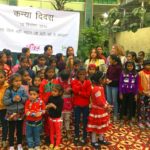It has been an established fact that participation of women in research has been quiet low. But over the course of time, this thriving percentage has been improved with significant development in women education. However, in the context of India this phenomenon is still disappointing. According to UNESCO 2015 statistics[1], only 14% of the researchers are women who are pursuing theircareers in research. In the second largest populated country of 1.2billion[2], out of which 48.5% are women, these figures are quiet alarming.


Zora Neal Hurston’s[3] biography describes that “Research is formalized curiosity. It is poking and prying with a purpose.It is a seeking that he or she who wishes may know the cosmic secrets of the world and they that dwell therein.”When interpreted correctly, we need to raise the spirits our women to pursue this curiosity and encourage continuous learning and questioning. Additionally, with the continuous technological development and booming artificial intelligence, major percentage of jobs would be shifted towards cognitive thinking[4]. Innovation and creativity will be highly demanding at the work desk and performance criteria.
Apart from underlining the importance and urgency, emphasizing the ideology behind it can lead to an interesting path to consider research as acareer option.As young women, to push the frontiers of research, an eco-system helps to lead this change and significantly compete with world-class research. In recent times, as a good example from ISRO teams[5], how women employees had contributed to put India as a pioneer in space research. But, we need to agree with the fact there are still only few women who are pushing the limits and being significant[6]. And yet, we still are in the earlier stages of shaping our future generation of women to achieve Noble prize.
Additionally, distribution of women across different fields of research and working on inter-disciplinary fields has to be highlighted. A holistic development can be attained, when there are significant contributions in humanities and social sciences while encouraging the STEM (Sciences, Technology, Engineering and Mathematical fields). Nevertheless, a crucial point always lies with the government policies and funding to invest in this enormous talent which has been ignored.
Though, we are still debating about the girl child education in a rural context, but to achieve inclusive progress women has to be scientifically creative and curious. If we expect 20% percentage of the women population to pursue research education it adds a value not only uplifting the world in an organised manner and closing the gender gap across the world. Because, it’s always have to be remembered that India as a country contributes to one-sixth of the world’s population.
References
- http://uis.unesco.org/sites/default/files/documents/fs34-women-in-science-2015-en.pdf
- http://mospi.nic.in/sites/default/files/reports_and_publication/statistical_publication/social_statistics/Chapter_7.pdf
- http://www.biography.com/people/zora-neale-hurston-9347659
- http://fortune.com/2016/10/12/artificial-intelligence-jobs/
- http://www.bbc.com/news/world-asia-india-38253471
- https://scroll.in/article/734380/four-indian-women-scientists-who-are-pushing-the-frontiers-of-research
About the Author
Sindhuri Ponnapureddy is a research associate at the Institute of Tourism, University of Applied Sciences in Lucerne, Switzerland. She is pursuing her PhD at Institute of Media and communications, University of Zurich. Her interests include tourism, marketing and consumer behaviour.


Looking forward to your participation for #BlogWithUs, you can mail us your entries at WriteWithUs@csrindia.org.
Discuss this article on Facebook




